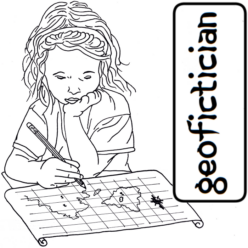This morning, I posted this in response to a query on the User Diaries at OpenGeofiction:
General advice for all users:
When deleting large numbers of objects, please be careful. This is not a use-case that the OSM software is designed to handle (think about it – mass deletions are NOT common on OSM). Divide up your deletions to cover small numbers of objects (<1000) and small areas (so if something goes wrong you don’t mess up large areas).
I called attention to the post in the discord channel (“OGFC”), and so I decided to rant onward and provide some additional clarification and thoughts. I’ve distilled those, without much editing, below.
To the above, I would add that in my own practice, I have another step I take with respect to deletions. I almost never delete relations. You’ll notice in JOSM, it actually tries to warn you that “this is rarely necessary” when you try to delete a relation, and I think that’s a solid point. What you can do with relations you don’t need any more is repurpose them. That means you delete the members of the relation, and all of its tags, and then use it the next time you need a new relation for something.
user: What would be the potential harm of deleting relations?
Well I suspect that sometimes, a deleted relation can end up as a “ghost” object, or a “stranded” object, in the render database. Meaning it’s truly been deleted from the API database (the main rails port) but that deletion fails to transfer correctly to the render database (which stores things in a different format, and doesn’t actually have “relations” at all, but rather transforms a relation them into a special type of “closed way” I think)
By repurposing a relation instead of deleting it, you guarantee the render database will have to reclassify the linked object(s).
If you just delete it, the render database might not handle the disappeared relation correctly, and just leave the no-longer-linked objects lying around.
This is just speculation, because I don’t really understand it well. But just based on observed behavior
In general, I think that the OSM software is not designed to handle mass deletions. That’s the key point.
Because in OSM, who goes around deleting large number of objects? The real world doesn’t work that way.
You re-tag things, yes. You might move things slightly, adjusting position to improve accuracy. But things in OSM don’t “disappear”
Or if they do, they do so in very, very small sets. A building gets knocked down. A road gets torn out.
One object at a time.
So it seems very plausible to me that the OSM software actually hasn’t been designed to handle mass deletions, and hasn’t been tested for integrity in dealing with mass deletions.
For years now, I’ve been telling people, when you decide to rearrange your territory (and what geofictician doesn’t sometimes decide to rearrange their territory?!) … it’s better to move things than to delete/re-create things.
This prevents “ghosts” in the render.
In the long run, I suspect that we’ll have to just “reboot” the render now and then. But I’m not going to do it very often. (I mean “reboot” as in delete and re-create from zero, not “reboot” as in turn the machine off and on again – that happens every night).
I’d welcome comments on this rambling, vaguely rant-like discourse, for those who are knowledgeable about how the OSM apidb-to-renderdb pipeline works.
Music to make deletions to: 10cm, “오늘밤에.”
